One word that seems to be synonymous with meat is slab. When I think of a steak, I think of a slab of meat. Similarly, when I received the cookbook – Good Meat: The Complete Guide to Sourcing and Cooking Sustainable Meat – I had the exact same thought.
This is one slab of a cookbook! A thick, hardback of 400 pages that is filled with valuable information, delicious recipes and stunning photography from cover to cover.
Anyone else excited by this book simply by reading the title? I was, and the title pretty much says it all.
Inside you will find everything you wanted to know about grass-fed beef and pastured meat and eggs – what it is, definitions of common terms used when discussing it, how to cook it, and the tools you’ll need to do so. It is described not only as a cookbook, but as a guide and that is spot on. This book is as much a necessary reference for meat in general as it is a collection of recipes.
We don’t eat an overabundance of meat, in fact, I would say our diet is at least 70% vegetarian, but we do eat meat and enjoy it. With the exception of the occasional order while traveling, when we do include meat in our meals it is from local farms utilizing sustainable practices and those which treat the animals as humanely as possible. Fortunately we have a lot of options that fit these criteria here in Kentucky.
Despite my frequency of preparing meat, I always struggle with recipe ideas. It’s just never been my strong point. Well, that could all change after browsing this book. The author, Deborah Krasner, a James Beard Award winning cookbook writer, covers beef, lamb, pork, rabbit, poultry and eggs, and even provides a recipe section for side dishes.
A taste of the recipes include:
Beef and Lamb Meat Loaf
Baked Cured Ham Steak with Honey, Onion Confit, and Bourbon
Roast Chicken with Apples Sausage, and Cider
Sicilian Rabbit Agrodolce
And yes, if you are the adventurous type, there are recipes for sweetbreads, tongue and gizzards.
What I love about this book:
- The book opens with multiple, homemade spice rubs that are used in many of the recipes to follow.
- The recipes are clearly written with straight forward instructions, one recipe per page.
- The recipes incorporate a variety of cultural cuisines including French, Indian, North African, Chinese and Cuban.
- There isn’t a photo with each recipe, but the photography included is outstanding from farm scenery to completed dishes. There are also pictorial descriptions of meat cuts for each meat type.
- The author touches on ethical topics for those of us who care deeply about animals, but still feel that some are meant to be a source of food. One example is her short section on the topic of naming animals.
What I’m not so crazy about:
I really like to make sure I look at cookbooks with a critical eye and mention the good with the bad. I have to be honest, though; there is nothing I don’t like about this cookbook.
If I had to stretch it, maybe I would go with the fact that it is really difficult for me to see a cute calf on one page and a slab of beef on another, but that doesn’t make the photography or the book any less spectacular. The book is also very large and difficult to keep open with the recipe in view while cooking, but I find that with multiple cookbooks in my collection.
Did I mention that there are dessert recipes in this meat cookbook? I got to test out the Pig Candy recipe and I absolutely love that name. Pig Candy is a peanut brittle-type candy that has the spiciness of crushed red pepper and the saltiness of pastured bacon.
I really wanted to make this recipe with brown rice syrup because I’ve heard that it is a good substitute for corn syrup. However, I couldn’t find it at the markets I went to so I stuck with corn syrup that did not also have HFCS in it. I’m not sure how much of an improvement that is, but I used what I had to work with. In addition, I used Demerara sugar instead of white sugar.
The result? Well, I think I burnt it a bit, and the Demerara did make it much darker. I am a true amateur candy maker and I need a lot more practice so I am going to chalk it up to that. However, despite the fact that I slightly burnt it and it isn’t perfect, we still can’t keep our hands out of it around here.
This recipe is brilliant, in my opinion. Add another one to your holiday baking list!
Pig Candy
Reprinted with permission from Abram Books
Peanut brittle made with crisp pastured bacon and a little red pepper—what could be bad about that? Try this with a glass of Bourbon or cocktails, or serve it at a Super Bowl party—either way, it’s memorable.
MAKES ABOUT 1 POUND BRITTLE
2 tablespoons unsalted butter, softened, plus more for greasing the baking sheet and spatula
1 cup sugar
1⁄2 cup light corn syrup
1⁄2 teaspoon sea salt or smoked salt flakes
1⁄4 cup water
1 cup roasted unsalted peanuts
1⁄4 teaspoon crushed red pepper flakes, or more to taste
1⁄2 cup crumbled crisp-cooked pastured pork bacon (about 6 slices)
1 teaspoon baking soda
Butter a silicone baking liner or cookie sheet, as well as an offset spatula or icing knife, and set aside.
Using a 1-quart saucepan, heat the sugar, corn syrup, salt, and water over medium heat and cook until the sugar dissolves, stirring with a silicone spatula. Stir in the nuts, red pepper, and bacon pieces.
Cook the mixture until it registers 300 to 310 degrees on a candy thermometer—it will form a long thread when you pull the spatula out. Depending on the pan and the efficiency of the burner, this can take up to 20 minutes.
Remove the pan from the heat and carefully but thoroughly stir in the 2 tablespoons butter and the baking soda (take care—the mixture will foam). Immediately pour the mixture onto the prepared pan and, using the offset spatula or an icing knife, spread it into an even layer as thinly as possible. When the brittle is cool enough to handle (but still warm and pliant), use your hands (gloves can help) to stretch and pull it even thinner.
When the brittle is cool, break it into pieces and serve, or store in an airtight tin.

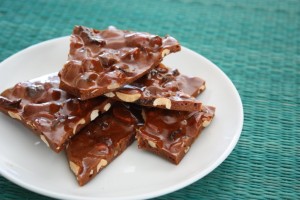
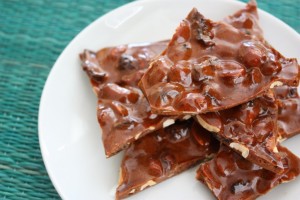
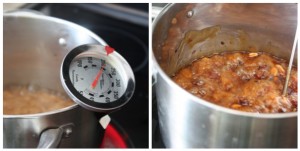
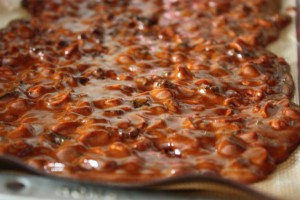
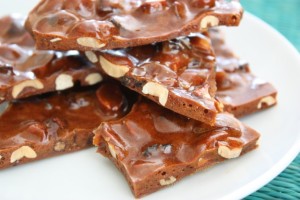
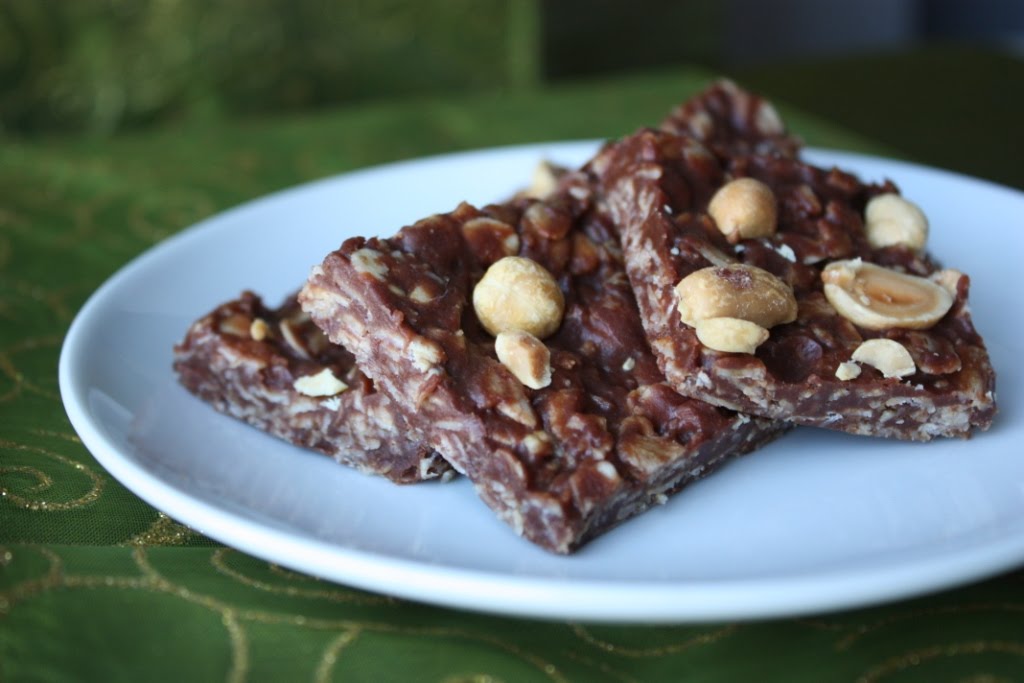
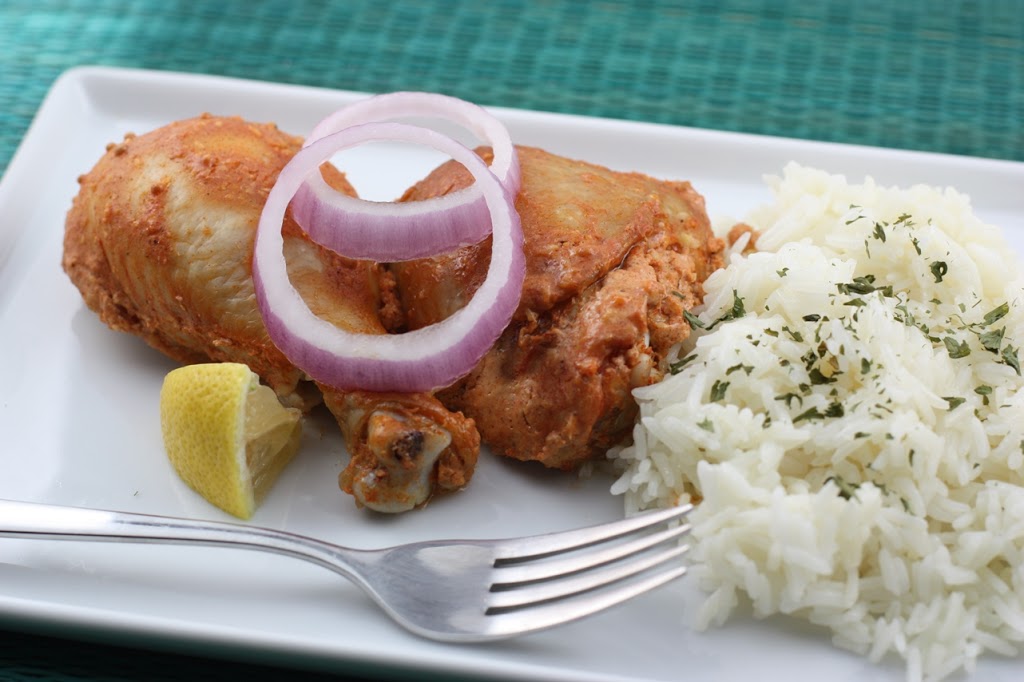
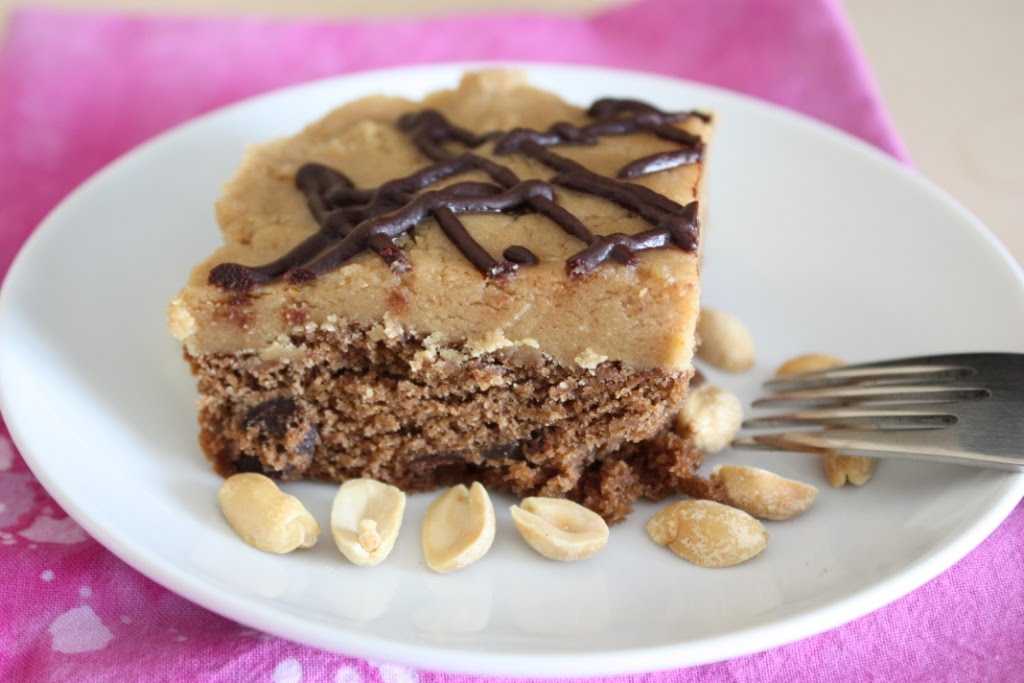

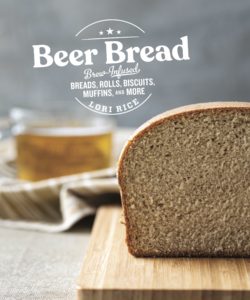
This book looks great! And with Marksbury Farms opening up soon, I’ll need some advice! 🙂
*squee* I’m so excited to hear about this book – LOVE that there is now a market for books and cookbooks about sustainable cooking for meat-eaters!
Ummm…I kinda totally want to try out that Pig Candy. Love the whole sweet salty thing, and who doesn’t love good bacon?
Love the look of that pig candy! Had some bacon dipped in chocolate last year and it was divine, so I’m totally on board with the bacon in candy idea.
Great looking book too – love that cover photograph.
I’m not the biggest meat eater either but I could seriously get behind a book like that! I’m always interested in learning more about GOOD meat! That pig candy sounds awesome. I love brittle. And brittle with bacon sounds divine.
That book looks awesome! Just the cover photo makes me want to buy it, and I don’t even eat meat that often. When we do, we’re like you, we buy local and humanely slaughtered pastured animals. Makes for tastier meat in my opinion!
As for the pig candy, I’m betting that if you did, in fact, “burn” it it would go great with the smokiness from the bacon! I’m pretty sure it was still to die for! Pig Candy, sounds delish!
Um, you are bringing some of the pig candy to Atlanta right?
This post has some great timing! Cbus just had Bacon Camp last weekend! 😀 I didn’t get to go though, boo. But as you can imagine, it celebrates the gloriousness that is bacon.
I love this book Lori! I’m adding it to my list to get!
Oh, I remember making candy in Food Science – definitely not a strength for me!
The book sounds like a great gift for my BF! He LOVES meat…
I am definitely impressed- that looks amazing! If you’re interested in entering a Halloween recipe contest, I’d love to see what you come up with! You can go here to learn more about it.
Love it. I think we (the collective we) have been scared away from meat but it’s all about quality. Looks like a sweet book.
Awesome looking book and even better looking candy. What in the world could be better than chocolate and bacon – not a thing!!!
Yum! I have to try pig candy. I have to admit, I scrunched my face up at the title, but once I saw the photos I was sold.
I wouldn’t worry about corn syrup, btw. It’s the processing (and literally the high fructose level) of HFCS that makes it dangerous. Regular corn syrup just has a lot of sugar in it… which I imagine brown rice sugar probably does too, if it’s going to be much of a substitute. I think you make a fine choice by keeping it in, but I wonder if there’s any kind of other health benefit to the rice syrup?
Not a big meat eater either but the book sounds like a gem. It’s an area I definitely need help with. And the pig candy – love it! I’m very into sweet and salty.
That pig candy could get me into some serious trouble. I love the sound of this cookbook, the options you mentioned make it a valuable resource.